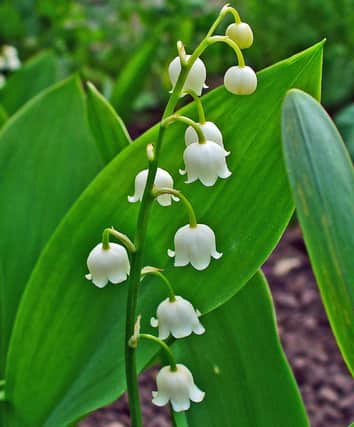Country & Coast: The best time for a walk in the woods


Everyone has their own preferred woods, and I sympathise with those who says that the large woodland at Nidd Gorge on the outskirts of Harrogate or Hackfall Wood near Masham have no equal in Yorkshire or anywhere else. I also have a soft spot for the Woodland Trust’s small but perfectly formed Bitholmes Wood above the Don Valley to the north of Sheffield. However, for more than 30 years my favourite springtime walk has been through the Yorkshire Wildlife Trust’s 250-acre reserve at Grass Wood in Wharfedale.
It is the most extensive woodland in the Yorkshire Dales National Park and one of the few surviving examples of the ancient ash woods which once covered so much of the Dales’ limestone escarpment.
Advertisement
Hide AdAdvertisement
Hide AdThis year the pageant of colourful flora has begun a little later than usual, with the first primroses and bluebells appearing beneath the limestone terraces which are the special feature of Grass Wood. But it will be in coming weeks that the wood’s the real jewels start to appear.
The most distinctive though hardly rare species is lily-of-the-valley, and over 50 years ago - when nearby Grassington still had a rail link with Skipton - it was to lily-pick that many families from the mill towns of Yorkshire and North Lancashire used to come every Whitsuntide. Picking flowers here is now strictly prohibited, of course.
Among the species associated with the wood are herb Paris, rock rose, bloody crane’s-bill, and the yellow pimpernel. That they still thrive here, however, is no thanks to foresters who in the post-Second World War drive to increase domestic timber production planted the wood with row upon row of Norway spruce and larch. “It was an act of vandalism,” a botanist tells me.
A ten-year plan by the YWT to remove the conifers and allow the wood’s ground flora to grow has paid dividends. The logs are sold to help fund the work and brash cut from the trees has been burned or gathered into so-called “habitat piles” in the clearings, where they are left to decompose naturally and attract insects and birds.
Advertisement
Hide AdAdvertisement
Hide AdThe opening up of the wood has certainly drawn many birds. I have managed to see the fairly uncommon marsh tit here on two occasions, and it is one of the few places I can expect to hear the “waffle” of green woodpeckers.
Often, my path is crossed by a hedgehog or roe deer, and flitting butterflies like ringlets and speckled woods. In springtime, it seems, Grass Wood has something for everyone.